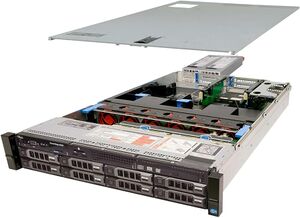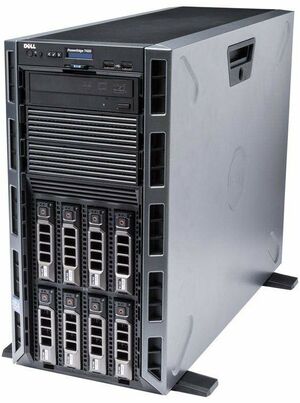We are still actively working on the spam issue.
Home Server/Used Servers
The world of used enterprise hardware is great fun. Tons of old but capable hardware is listed on numerous marketplaces, sometimes with free shipping. Older generations of servers are cheap and ubiquitous.
Contents
[hide]Pros
- Excellent balance of cost vs. performance.
- Spare parts are dirt-cheap.
- Native out-of-band management tools (iDRAC, IPMI).
- Upgrades are cheap.
- A fully loaded older enterprise server can compete with a more modern server at a much, much lower price point.
Cons
- Loud.
- No warranty.
- No support.
- Servers tend to ship in a pretty basic configuration, so a more significant investment into additional parts is required.
- Old servers will lack more modern CPU's, potentially restricting the workloads you can use it for.
Server Noise
Rackmount servers are designed with one goal in mind: maximum performance. This means things like noise and power efficiency were completely ignored by the engineers. Remember, these types of servers are designed to be racked in dedicated rooms hidden away from people.
A good rule of thumb is that the smaller a server is, the louder its fans will be. Servers also tend to store their hard drives outside their chassis, whereas consumer desktops hide their drives internally to reduce noise. If you are concerned about noise but still want an enterprise server, look at tower servers. These tend to be designed with human proximity in mind (they are commonly seen sitting in a corner of an office rather than in a dedicated server closet).
Don't plan on replacing fans with something quieter like Noctua. Server fans are designed to move large volumes of air and consumer fans aren't capable of supplying the necessary flow. Furthermore, many server motherboards expect the fan RPMs to be a certain level and will throw an error if they detect replacement fans (they think it's a "fan failure"). It's possible to make the replacement fans work but it can be quite a hassle.
Things to look out for when buying used
- Make sure the system is 64bit. 32bit systems are very old, avoid at all costs.
- Some older legacy systems do not support UEFI and thus cannot boot UEFI OS's.
- Older hardware specs may become performance bottlenecks (Earlier SATA/PCIe/SAS/USB revisions).
- Some very old (8-10 years) high-end CPUs actually perform worse than modern low-to-mid end CPUs.
- Server hardware typically lacks features you are used to on consumer hardware.
- In addition to SATA drives, there are also SAS drives. SAS is used in the enterprise world and is not compatible with SATA. Make sure you know what you are buying.
Good places to find old server hardware
- www.labgopher.com Website which gathers eBay listings for server hardware.
- www.bargainhardware.co.uk Decent place for UK.
- Craigslist. Local businesses and governments tend to sell their unneeded hardware there.
- Ebay. There are many good sellers here that sometimes even offer warranty on their servers and equipment.
A Note on JBODs
A JBOD (Just a Bunch of Disks) is a chassis that holds a lot of disks that are connected to another server. While these seem attractive due to their low price point and enormous storage capacity, JBODs tend to be surprisingly loud and power-hungry.

